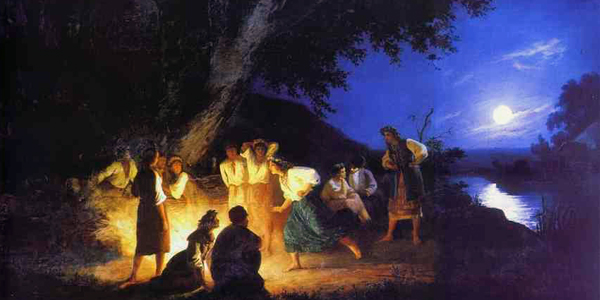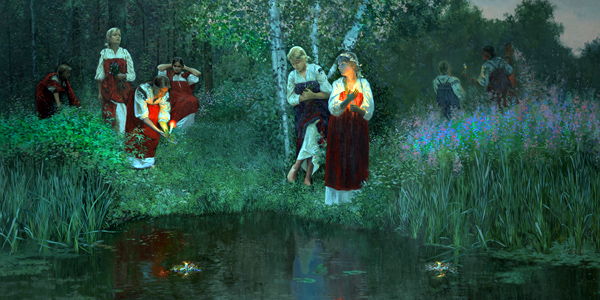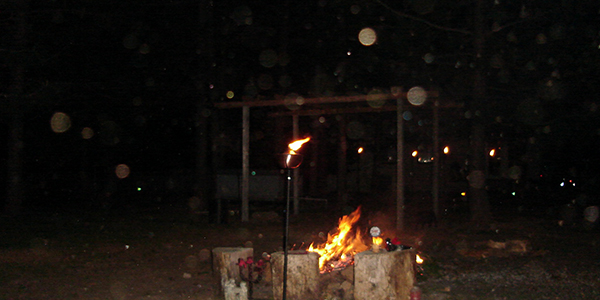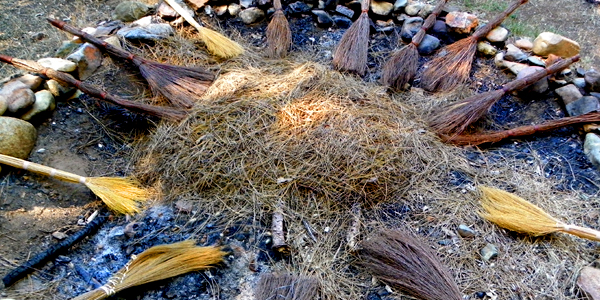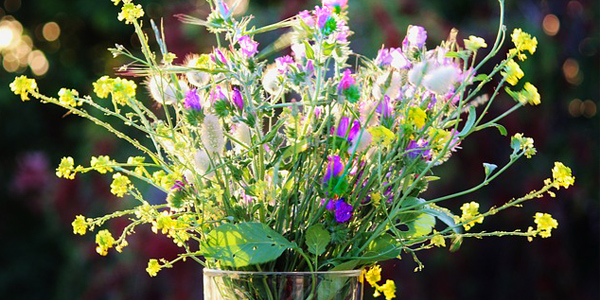Of all of the holidays, it can be argued that most cultures at some time or another celebrated Midsummer. The Sun reigns at its full power and dominates the sky for the longest day of the year on Litha. It is commonly believed that the Faeries are most active during this time and that idea was perpetuated by William Shakespeare’s famous play, A Midsummer Night’s Dream. The power of herbs and plants is said to be strongest at this time, so many of the summer herbs are harvested on this day.
According the Celtic calendar, this was literally the middle of summer, which began at Beltane and will end with Lammas. By the time we reach Midsummer, the freezing cold of winter has completely loosened its grip and we celebrate the long, warm days. The crops are planted and now fully visible in the fields, so a collective sigh of relief goes up. Provided proper care is given and no calamity befalls, the harvest is assured.
Summer Solstice is the opposite power of Winter Solstice, the longest night. While the Moon is the dominant force for Winter Solstice and the energy is overwhelmingly feminine, at Summer Solstice, the Sun is king and masculine energy permeates all existence. This day typically falls around June 21st. Summer Solstice marks the zenith of the Sun and from this point on, the days will gradually shorten toward the call of winter yet again. The truest definition of astrological Summer Solstice is when the Sun is at its most Northern position touching the Tropic of Cancer. Just as it did at Winter Solstice, the Sun appears to stand still at the Summer Solstice, reminding us that “Sol” means “Sun” and “stice” means “to stand still.” Because of the balance it represents, it is considered extremely good luck if a Full Moon falls directly on the date of the Summer Solstice.
The Native American peoples of the Plains Tribes celebrated Midsummer with their Sun Dance, which lasted up to four days. They would ritualistically connect Heaven and earth with a “Sun Pole.” Male puberty rites took place at this time. The purpose of the ritual was for purification and renewal of themselves and of the earth.
“I know a bank where the wild thyme blows,
Where oxlips and the nodding violet grows,
Quite over-canopied with luscious woodbine,
With sweet musk-roses and with eglantine.”
? William Shakespeare, A Midsummer Night’s Dream
For the desert people of Nabta Playa of southern Egypt, determining the time of the Summer Solstice was of critical importance since it brought with it the monsoon season. In Karnak, Summer Solstice told residents that the Nile would soon flood. Some tribes assigned “Sun watchers” whose sacred duty it was to keep track of the position of the Sun and chart the solstices and equinoxes. The Sun watchers recognized the time of the solstice when the Sun remained in the same place for four consecutive days.
Following the idea of the immediate, but gradual, waning of the Sun’s power at Midsummer, Chinese Taoists honor the Summer Solstice as the birth of the divine female principle: the yin. Winter Solstice heralds the birth of the yang¸ the divine male principle.
Purging is a main theme of Litha and you have likely sensed a theme in how those ancient Europeans liked to celebrate during these festivals. They lit stuff on fire. Truly, there is not a single holiday where the Europeans did not set giant piles of things on fire into huge conflagrations, so expect to see that during each of our holiday discussions. Bonfires burned throughout Europe as the Midsummer was celebrated. The fires were set so that the fields were downwind and the smoke carried over the crops to bless them. Torches were lit from the fires and taken into homes to and around the cattle areas to bless and protect them. This tremendously significant because now that the harvest was visible in the fields, growing strong and proud, there was an urgency to protect it from blight, weather disasters, or disease.
After the Ice Age was over, the nomadic groups who created the villages of which we speak gathered around areas where there was still plenty of water. With the Sun hot in the sky and the days are long, the water supply that is their salvation shrank and became stagnant, which is the perfect breeding ground for disease-carrying bugs. The smoke from the fires helped to keep down the bug population and prevent disease.
Since the power of summer herbs was considered heightened at this time, St. John’s wort, vervain, lavender, calendula, mugwort, and mistletoe were harvested during this time and brought into the home for protection. An interesting point about mistletoe is that at Winter Solstice, the plant has berries and promotes fertility. Mistletoe is also believed, in fact, to have the power to open locks. At Summer Solstice, there are no berries and the properties shift to protection. Amulets of mistletoe were woven for protection and boughs of rowan were affixed over stables and barns to keep livestock safe. A fun piece of lore says that fern seed collected at Midsummer has the ability to render a person invisible. The trick is that ferns are not flowering plants and therefore, do not have seeds. They propagate by means of spores, which are nearly invisible to the naked eye and are present on the underside of the leaf of some species. Although it is doubtful that true invisibility can be accomplished, it is said that if the full leaf is harvested at Midsummer and wore in a person’s shoe, they will be able to slip by unnoticed.
Because of the belief of increased Faerie activity at this time, many people follow the tradition of leaving out food, bowls of sweetened milk, bread and honey, wine, trinkets or other treats for the wee folks.
Pets and familiars were blessed during the Summer Solstice. For those who practiced animal husbandry, a representative animal from the herd would often be taken to receive the official blessing, which was then conveyed to the entire herd. The Beltane tradition of driving herds of cattle between the bonfires extended to the Summer Solstice fires as well.
Two Christian festivals occur at this time. One is called St. John’s Day, which is a time of great feasting to commemorate the birth of John the Baptist. The venerated St. John’s Wort is, of course, named for John the Baptist. St. John’s Day is traditionally celebrated on June 25 and is seen as the counterbalance to Christmas. In the 14th century, it was tradition for the women of Cologne in Germany to rinse their hands and arms in the Rhine River to ward off “threatening calamities of the coming year.”
The second festival is Whitsuntide, the 50th day after Easter. Although bonfires were once used to celebrate this harvest, it has now been replaced by candle services throughout Europe.
One of the most famous sites for Midsummer magic is the famous Stonehenge monument in England. The “Heel Stone” is located just outside the main entrance to Stonehenge and when one stands inside the monument and faces the Heel Stone on Summer Solstice, they will see the Sun rise directly over the stone. What a glorious way to welcome the celestial representation of male power on it’s strongest day of the year before we begin to sink so gradually into darkness!

